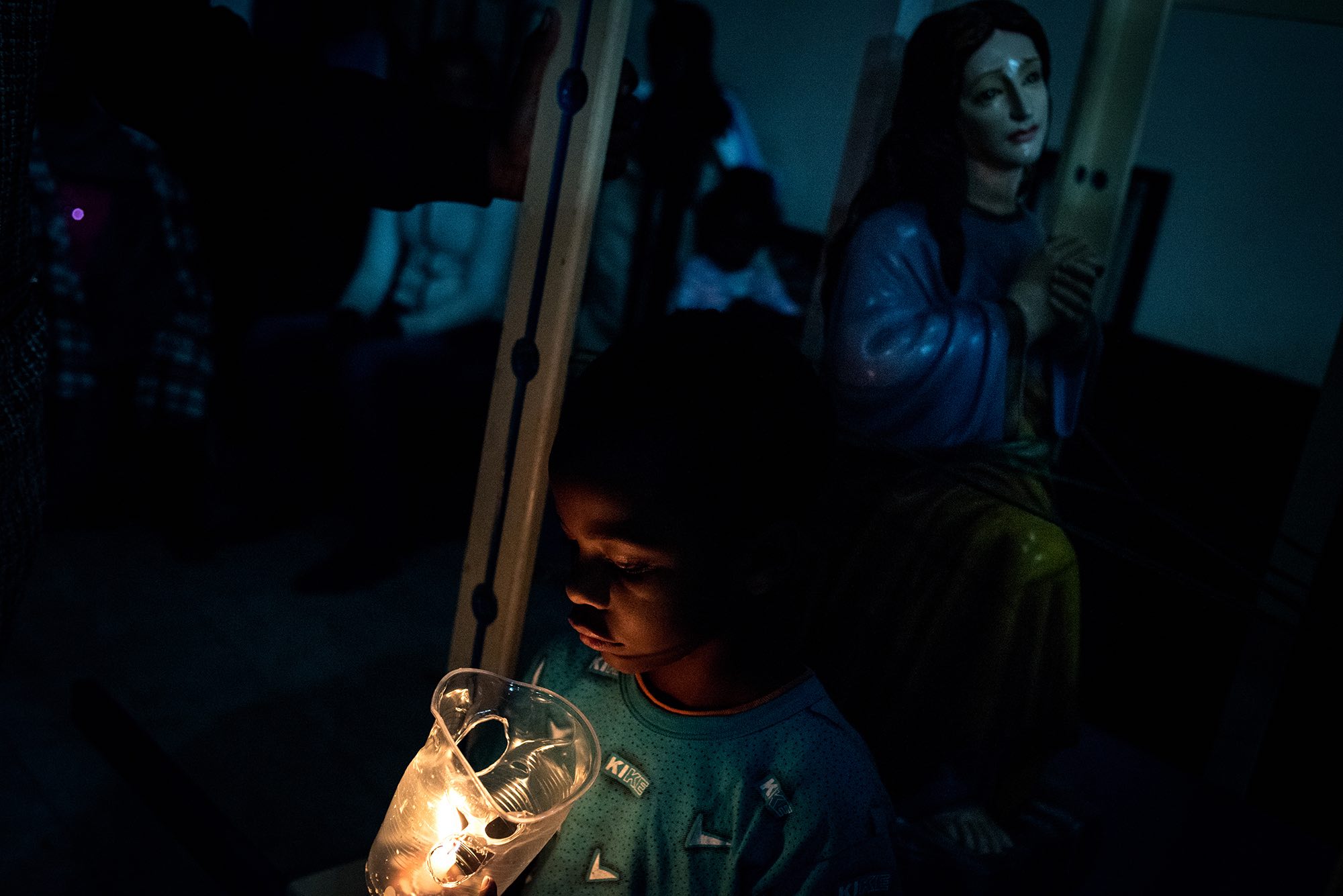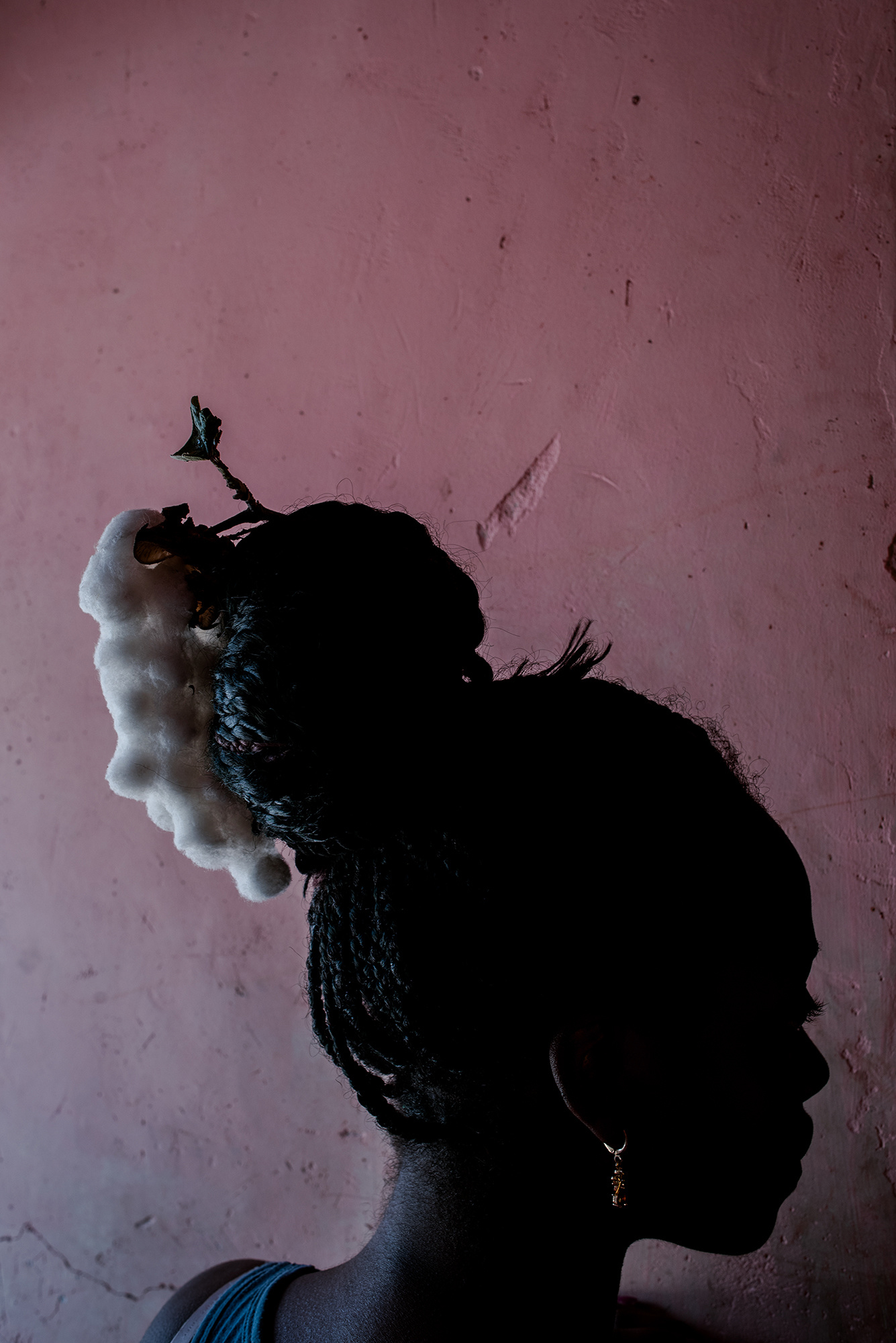Spirituality and storytelling in Afro-Ecuadorian communities
- Text by Huck
- Photography by Johis Alarcón

The term ‘Cimarrona’ refers to what Johis Alarcón calls “the wild female spirit”. In her ongoing visual project (itself titled Cimarrona), the Ecuadorian photographer explores identity in Afro-Ecuadorian communities through this lens.
While Alarcón had long been fascinated with the notion of spirituality, it was a conversation with a close friend – the pan-African activist Sista Karla Viteri Addis Abbeba – that compelled her to begin the series.
When we were speaking, she said, ‘You are very lucky, because you have always been with your mother,’” remembers Alarcón.
“At first I was confused, but afterwards she clarified, “I could never meet my mother, my Mother Africa, I was forced to leave it. My only way of being in connection is [through] my spirituality. In that moment awoke in me a great questioning… How is Africa still alive in Ecuador? How is your spirituality still alive?”

 A year and a half later, Cimarrona – which is showing as part of Latin American Foto Festival presented by the Bronx Documentary Center – exists as a detailed portrait of the country’s African diaspora. Part of a wider Afro-Americans project supported by AECID, the project saw Alarcón embedding herself within the communities she photographed, discovering how cultural identity was preserved and passed down through generations via oral histories and storytelling.
A year and a half later, Cimarrona – which is showing as part of Latin American Foto Festival presented by the Bronx Documentary Center – exists as a detailed portrait of the country’s African diaspora. Part of a wider Afro-Americans project supported by AECID, the project saw Alarcón embedding herself within the communities she photographed, discovering how cultural identity was preserved and passed down through generations via oral histories and storytelling.
“Albita Pavón, one of the first women I photographed, told me about the story titled Secretly They Arrived, which says that when the black people were brought to America, the ships did not come only enslaved bodies, but also came their Orishas – deities of the afro people.”
“These spirits accompanied and guarded their people, giving them the strength and wisdom to find their liberation. It is they, the Orishas, who live to this day in all the Afro Palenques in Ecuador.”
 The images that make up the project occupy a space between documentary and fine art, blending the realities of day-to-day life within Afro-Ecuadorian with visual depictions of the spiritual. For Alarcón, it’s about celebrating the perseverance and resolve that make up ‘Cimarrona’, all while introducing it to a wider network of people.
The images that make up the project occupy a space between documentary and fine art, blending the realities of day-to-day life within Afro-Ecuadorian with visual depictions of the spiritual. For Alarcón, it’s about celebrating the perseverance and resolve that make up ‘Cimarrona’, all while introducing it to a wider network of people.
“I believe that photography is a space in which you can meet each other. If you find a common point, one you can identify and recognise in each other, you can open a space for dialogue, and above all for humanity.”





 Latin American Foto Festival 2019, presented by the Bronx Documentary Centre, is showing until until 21 July.
Latin American Foto Festival 2019, presented by the Bronx Documentary Centre, is showing until until 21 July.
See more of Johis Alarcón’s work on her official website.
Enjoyed this article? Like Huck on Facebook or follow us on Twitter.
You might like

In Medellín’s alleys and side streets, football’s founding spirit shines
Street Spirit — Granted two weeks of unfettered access, photographer Tom Ringsby captures the warmth and DIY essence of the Colombian city’s grassroots street football scene.
Written by: Isaac Muk

Remembering New York’s ’90s gay scene via its vibrant nightclub flyers
Getting In — After coming out in his 20s, David Kennerley became a fixture on the city’s queer scene, while pocketing invites that he picked up along the way. His latest book dives into his rich archive.
Written by: Miss Rosen

On Alexander Skarsgård’s trousers, The Rehearsal, and the importance of weirdos
Freaks and Finances — In the May edition of our monthly culture newsletter, columnist Emma Garland reflects on the Swedish actor’s Cannes look, Nathan Fielder’s wild ambition, and Jafaican.
Written by: Emma Garland

Why Katy Perry’s space flight was one giant flop for mankind
Galactic girlbossing — In a widely-panned, 11-minute trip to the edge of the earth’s atmosphere, the ‘Women’s World’ singer joined an all-female space crew in an expensive vanity advert for Jeff Bezos’ Blue Origin. Newsletter columnist Emma Garland explains its apocalypse indicating signs.
Written by: Emma Garland

Katie Goh: “I want people to engage with the politics of oranges”
Foreign Fruit — In her new book, the Edinburgh-based writer traces her personal history through the citrus fruit’s global spread, from a village in China to Californian groves. Angela Hui caught up with her to find out more.
Written by: Angela Hui

We are all Mia Khalifa
How humour, therapy and community help Huck's latest cover star control her narrative.
Written by: Alya Mooro

